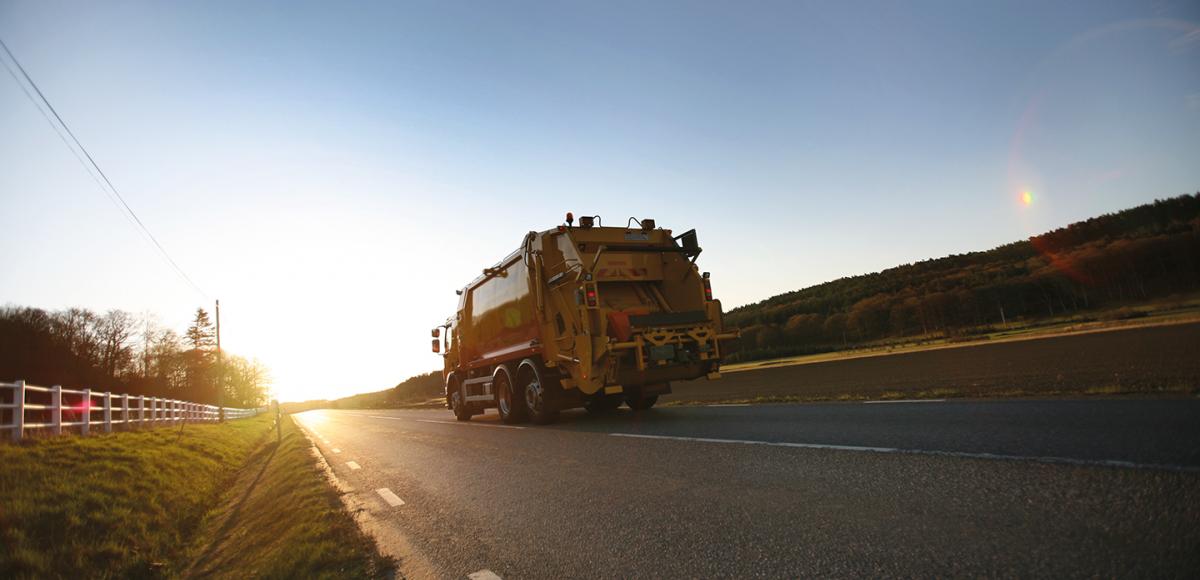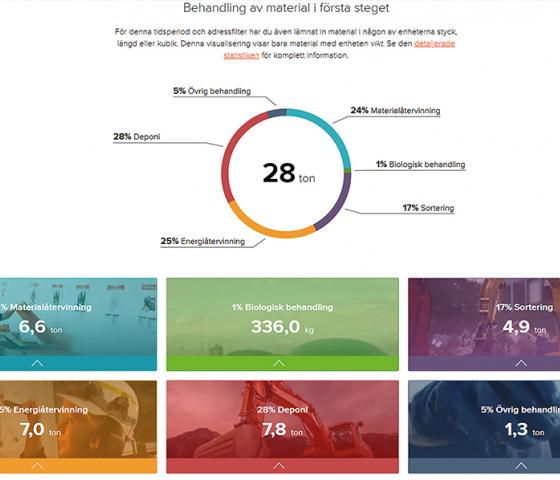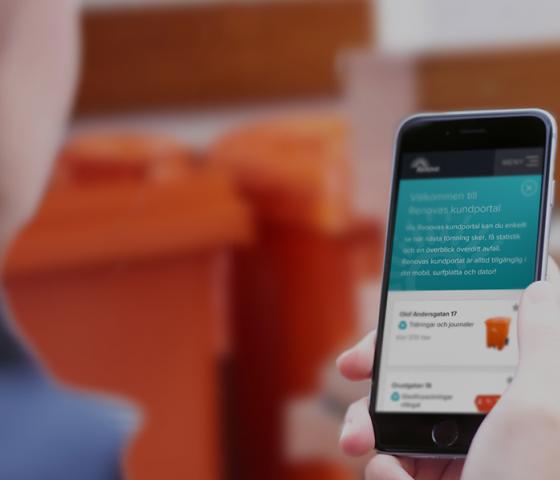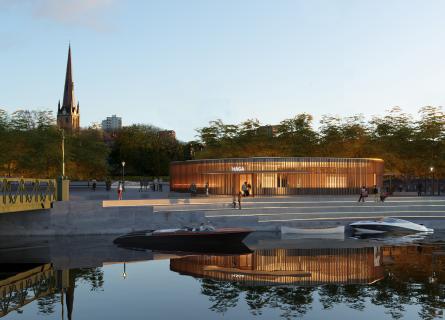
Designing for better business and sustainability
Renova, a company offering waste management and recycling solutions, wants to encourage their customers to be more sustainable.
Together with inUse, a part of AFRY, they have developed a customer portal to that effect; a portal in which smart design and insights from behavioural science also increases business value.
Despite our best intentions, as humans we often act short-sightedly, make irrational decisions and go against our own principles. Today, science knows that knowledge is only one of the factors that influences the way we act. To a large extent, our behaviour is governed by feelings, values, social norms and incentives. Therefore, only providing people with information in order to get them to act sustainably is not enough. They also need support, encouragement and feedback about their actions in order to change their behaviour.
Using nudging
Nudging is the term behavioural economists use for methods and tools that try to encourage people to a act in a desired way – for example, to behave more sustainably. In recent years, the nudging concept has gained considerable attention, and Renova, a waste management company, uses it to drive change.
Together with inUse, a part of AFRY where experts focus on the interaction between humans and technology, Renova has developed a digital customer portal that nudges the users towards greater sustainability.
”Most of our customers want to do a good job regarding their waste management. With the portal, they receive direct feedback about their behaviour and can take steps to improve it. ’Can we reduce our use of this type of material? Can we recycle more?’ ” says Kajsa Lager, Business Manager at Renova.

Big data
The key is smart design. The portal presents an overview of the customer’s waste management, visualised in a comprehensive, easy-to-follow format. The customers can monitor their waste, sorted by type and amount, when it was collected and which containers were overloaded or empty.
Even before the portal was developed, Renova had access to data about their customers’ waste. But it was hard to get a meaningful overall picture of it, since the information was scattered over several internal systems. inUse’s job was to systemise the data and create an easy way for customers to understand the information. When customers sort their waste more efficiently, it’s easier to collect – and that is also a win for the environment.
”During the entire project, we worked with prototypes and continuously tested the platform with real users, to get feedback to optimise the user experience”, describes Nathalie Tindsjö, a user experience designer at inUse working on the project.
Feedback is crucial
Kajsa Lager from Renova describes waste management as a ”traditional” industry, where digitalisation has been slow. Digital tools have a key role to play to further circular material flows, so that we, eventually, can arrive at a circular economy.
With the new portal, Renova not only wants to provide its customers with an overview of their waste management, but also show them how their actions make a difference. With the function called ”Environmental Benefits” in the portal, the customers can see what happens to the waste after it is collected, and how their actions contribute to a better environment. Studies have shown that this type of feedback is effective in making people keep up their sustainable behaviour.
”We want to give our customers a clear picture of their environmental footprint. The portal shows the lifecycle of their waste, what happens after it is collected by us – how much is recycled, or incinerated or deposited”, continues Kajsa.
Today, 90 percent of the waste collected by Renova is recycled as new material or energy. Renova’s long term ambition is to minimise the amount of waste and to reuse as much as possible–the best solution for the environment.

Good for business
What was first conceived as a customer portal has along the way been transformed into a common platform that gives customers, sales representatives and even truck drivers the same overview of the waste management process.
”The sales representatives see the same information as the customers and get an overview of the customers’ recycling services. They can identify opportunities to improve waste management and provide the customer with recommendations, for the benefit of both the customer and the environment”, says Nathalie.
It is yet too early to tell if customer behaviour has changed since the portal was launched, but Kajsa says there is a great interest and the number of users is growing. She hopes that in the future the portal will serve as a knowledge bank where customers can access expert advice on sustainable use of resources.
But first, inUse will take the portal further, by making the environmental benefits even clearer to Renova’s customers.
”There are lots of things left to do. Some minor, such as graphics which show how many new cardboard boxes can be manufactured thanks to the collected waste, or how many miles an electric car can drive with the energy from incinerated material. But also new services that will help us and our customers to become even more sustainable”, says Kajsa Lager.


